By Anthony Akaeze, Newswatch
Between the Maitatsine religious riots of 1980 and the latest Boko Haram, there have been more than 20 cases of ethno-religious conflagration resulting in more than 10,000 deaths and the destruction of properties worth billions of Naira.
“I was a bigot, a fanatic and an ignoramus of man fighting tirelessly, maiming and actually sending the innocent to the great beyond prematurely, all in the name of religion.”
Mohammed Abdul-Azeez, a one time Maitatsine henchman, uttered those words at the then Foursquare Church in Yaba, Lagos, after he had renounced membership of the Islamic sect that first caused mayhem in Kano in December 1980. Abdul-Azeez’s repentance came nine years after the incident in October 1989. Even at that time, the ravages of the Maitatsine riots in Kano, which later spread to Yola, Maiduguri, Bauchi and Gombe in that order, was still fresh in the minds of Nigerians. The riots caused huge losses, in human and material terms. No less than six thousand lives were lost during the mayhem.
The very first violence in Kano shocked many Nigerians to their marrow. In that crisis alone, 4,177 lives were lost. The Kano incident stands out for being the first religious crisis that took a huge toll on human lives and property. Although there had been series of religious tensions and skirmishes across the country, one of which was the crises witnessed in May 1980 in Zaria during which property belonging to mainly christians were destroyed by some muslims, few people could have imagined that differences in religion could lead to such wanton destruction of lives and property as witnessed in December 1980. But that was the scenario.
Members of the sect called the Maitatsine led by one Muhammadu Marwa, shot their way to notoriety when, seven months after the Zaria disturbances, they took to the streets proclaiming their brand of Islam to be superior to every other one, including Christianity, and in the process, initiated an orgy of violence that claimed human lives and property.
Reflecting on the incident, Hamzah Adesola Dawood, in an article “Maitatsine Magneto again,” noted that the “city of Kano was shaken to the marrow, pandemonium erupted and the whole country under the leadership of the first civilian executive president,” Shehu Shagari, was gripped with fear of “outbreak of civil war.” He further noted that although the Maitatsine saga lasted ten days, the “uprising was believed to be the only incidence which led to serious loss of lives and property since the civil war.”
For the ten days the incident lasted, law enforcement officers had a difficult time containing the crisis. To prevent the crisis from further spreading, the Shagari administration was forced to call in the military to quell and restore order, after the police had battled endlessly and fruitlessly to do so. Shagari reportedly followed this up by signing into law the Unlawful Society Order of 1982 which prohibited groups such as the Maitatsine sect from operating under whatever guise.
But that did not prevent the fundamentalists from striking again. This time, they shifted base to Bullumkutu, Maiduguri, in Borno State, and collaborated with another sect called Kala-Kato to instigate violence there. By the time the situation was brought under control, 118 people had lost their lives, while a huge loss of property was recorded.
Not done, the Maitatsine sect further spread their tentacles to the old Gongola State, and instigated another violence. By the time security forces battled to restore order in parts of the state like Jimeta, Dobeli, Zango, Yelwa,Va’atita, Rumde and Nassarawa, no fewer than 568 persons had lost their lives while property worth millions of Naira were destroyed.
That was not the last religious crisis to be linked to the Maitatsine sect. Between April 26 to 28, 1985, in the Pantami area of Gombe State in the then Bauchi State, 105 Nigerians reportedly lost their lives while many others lost valuables in another religious conflagration traced to the group. In all the crisis involving the Maitatsine men, the sight of cudgel weilding fanatics, mutilated bodies and burnt houses, were common scenes and were some of the charges many of the group’s followers had to face in law courts, leading to the prosecution of some of them.
But those who thought that the trial of the fanatics in court would signal the end of religious crises in Nigeria were soon disappointed. Like the proverbial forbidden fruit, which, once tasted, opened the eyes of the partakers, Nigeria, a multi ethnic nation, inhabited mainly by christians and moslems appeared to have lost its innocence with the Maitatsine riots and had joined the infamous list of countries where politico-religious crises posed serious danger to mankind.
In March 1986, barely a year after the last Maitatsine riot was recorded, christians and moslems engaged each other in a superiority fight, in what was said to have been sparked by a mere Easter procession in Ilorin. Subsequent religious squabbles were recorded in the late and early 1990s, beginning with the March 1987 confrontation in Kafanchan between moslems and christians, leading to loss of lives and destruction of property.
First, Christians and native Kajes were accused of destroying mosques in the Southern Kaduna town of Kafanchan. On the same day, this time in Gusau, Kaduna, Zaria, Katsina and Funtua, the nation witnessed what might be seen as a reprisal attack when some muslims took to the streets chanting war songs and setting churches and properties belonging to christians on fire. The disturbance also led to loss of lives.
In April 1991, echoes of the Maitatsine and the memories of the havoc they unleashed on society gripped many people. But it had nothing to do with Marwa, the Maitatsine leader. The fellow this time was a man called Yahaya Yakubu. He was identified as the head of the Shi’ite sect in Katsina who, with his members, masterminded a bloody protest in the town. And no sooner had the Katsina crisis died down than the Bauchi own erupted. According to a Newswatch report which appeared in the May 6, 1991 edition of the magazine, the Bauchi riot was “the worst religious crisis the country has witnessed since 1984 when the Maitatsine religious fanatics struck in Jimeta, Gongola State, and about 764 Nigerians were killed. For four days, Bauchi State was engulfed in the fire of religious violence.Thousands of hoodlums, many of them teenagers, using religious cover,went on rampage in some towns, including the state capital, Bauchi. The tale of terror was beyond comprehension as casualty figures mounted and scores of homes, churches, hotels and some public property were torched.”
Six months later, the train of religious conflagration returned to Kano. What was initially thought to be a peaceful demonstration by the Izela sect to stop Reinhard Bonnke’s evangelical crusade in the town soon turned violent, resulting in a clash between christians and muslims. Many people lost their lives while others were wounded, to say nothing of the enormous loss of property.
It did not end with that. Kano also made headlines in December 1994, when an Igbo trader, Gideon Akaluka, was beheaded by Muslim fundamentalists and had his head paraded on a spike on the streets of Kano after he was accused of desecrating the Koran by inscribing some blasphemous words against Mohammed in his shop at the Sabon Gari area of the town. More religious riots followed in May 1995, July 1999, October 2001 and May 2004 respectively, leading to one concerned Nigerian describing the town as “the hotbed of religious crises in Nigeria.”
But Kano was not an isolated case. Soon, it was the turn of Zangon Kataf, Funtua, Yelwa- Shendam, Wase and Jos to have their shares of religious trouble. At times, all it took was for two people of different faiths or ethnic groups to pick up a minor quarrel, or to have political differences and before long, security officials would be battling with how to stop a crisis. This was the situation in May 1992 when a communal feud between the indigenous Katafs and the Hausa in Kaduna State, later assumed religious dimension and even spread to other towns within the state leaving deaths and destruction in its wake.
That of Jos, the first of which was in September 2001, was said to have been sparked off by political differences between the mainly christian natives and the settler community made up of the Hausa/Fulani. By the time the dust raised by the squabble had settled, hundreds of people had lost their lives while property and businesses that took pains and years to acquire went up in ruins. In what could pass as a postscript on the Jos crisis, a disappointed Nigerian had noted that “the fact that the crisis happened at all in Jos, of all places, shows that anything is possible in Nigeria.”
His statement was a reminder to how many Nigerians viewed Jos. Long considered as Nigeria’s idyllic city, due partly to its natural beauty and temperate climate, Jos was also a cosmopolitan town and melting pot of various ethnic groups of people who had lived in peace for many decades. But since that September 2001 that the peace of the state was shattered, Jos had literary known no peace. In fact, if a study were to be carried out today, on the towns or states in Nigeria that are prone to violence, Jos would naturally rank as a front runner.
Conservative estimates put the cost of human lives wasted in Jos and other towns within the state since 2001 at over 4,000. This included the crises that trailed the PDP congress in the state in 2000, the Yelwa – Shendam – Wase killings in 2002, the violence and death witnessed in 2004 which led to the imposition of state of emergency in the state during the Joshua Dariye administration as well as the recent but bloody conflict in November 2008 which was sparked off by the announcements of the results of election into Jos north local government council. Even though the cause of the crisis was political, the killings and destruction of property took a religious discusion.
But the violence that erupted in Kaduna in 2000 had nothing to do with election results. It was traced to the introduction of Sharia law in the state. Following the announcement of the introduction of Sharia law in Zamfara State, many other states including Kaduna decided to replicate same in their states. But it was met with opposition from the largely christian population of the Southern Kaduna people. More than two thousand people reportedly lost their lives in that conflict.
Two years later, in November 2000, Kaduna was back in the news. The row this time had to do with a story in Thisday newspaper concerning the impending Miss World Pageant billed to hold in Nigeria. Isioma Daniel, a Thisday reporter, wrote an article which muslims considered disparaging to their faith. They soon went on rampage, causing blood to flow. The riots later spread to Abuja where the Miss World Beauty Pageant was scheduled to hold, forcing the organisers to cancel the event and name London as replacement.
In February 2006, the tinderbox shifted to Maiduguri and was lit when a group of muslims converged in the Ramat area of the town to protest the drawing in a Danish newspaper of prophet Mohammed. The police reportedly fired teargas to disperse the crowd only for them to go on a rampage. They destroyed properties belonging to non-muslims and attacked and killed christians including Michael Gajere, who was identified as the Catholic priest in charge of St Rita’s Catholic Church. In that particular crisis, more than 50 christians reportedly lost their lives, with some 200 shops, 50 houses and 100 vehicles either burnt or vandalised.
The Maiduguri incident led to reprisal attacks in Onitsha by some Igbo. Incensed by the sight of their kith and kin who were brought home for burial, some Igbo went in search of some muslims in the commercial town, and ended up killing more than 30 of them.
Three years later, Maiduguri’s reputation as a hotbed of ethno-religious crisis again came to the fore, and in a fashion that reminded many of the Maitatsine riot. A group of religious zealots who tagged themselves Boko Haram orchestrated an orgy of violence in four northern states including Borno, the capital of Maiduguri. The others are Bauchi, Kano and Yobe. More than one thousand innocent Nigerians lost their lives in just four days. The Boko Haram members were said to be opposed to Western education.
Boko Haram itself translates to “Western education is a sin,” and was led by a 32- year-old man called Mohammed Yusuf. Between July 24 and July 30, the ripples generated by the crisis was yet to die down as many questions begged for answers. Questions were asked as to how the young sect leader was able to recruit and indoctrinate his members without the knowledge of security officials and set them loose on the society leading to the tragic deaths of many Nigerians in the four northern cities. But Yusuf, like some of his members, also lost his life in the crises after security men went on the offensive, in their bid to nip the conflict in the bud.
Subscribe to:
Post Comments (Atom)

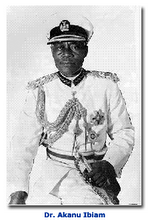
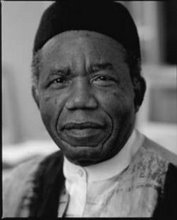
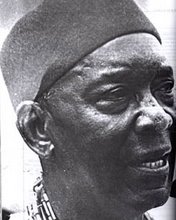
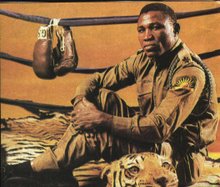
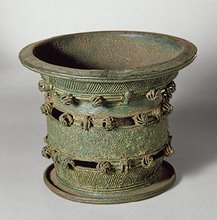
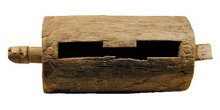
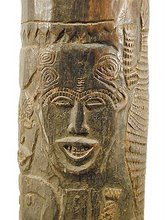
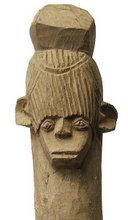
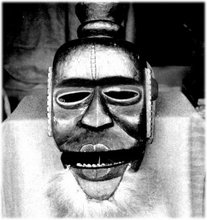

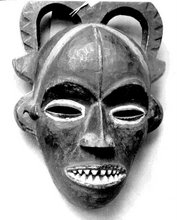
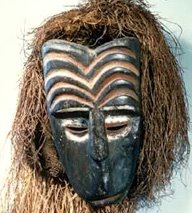
No comments:
Post a Comment